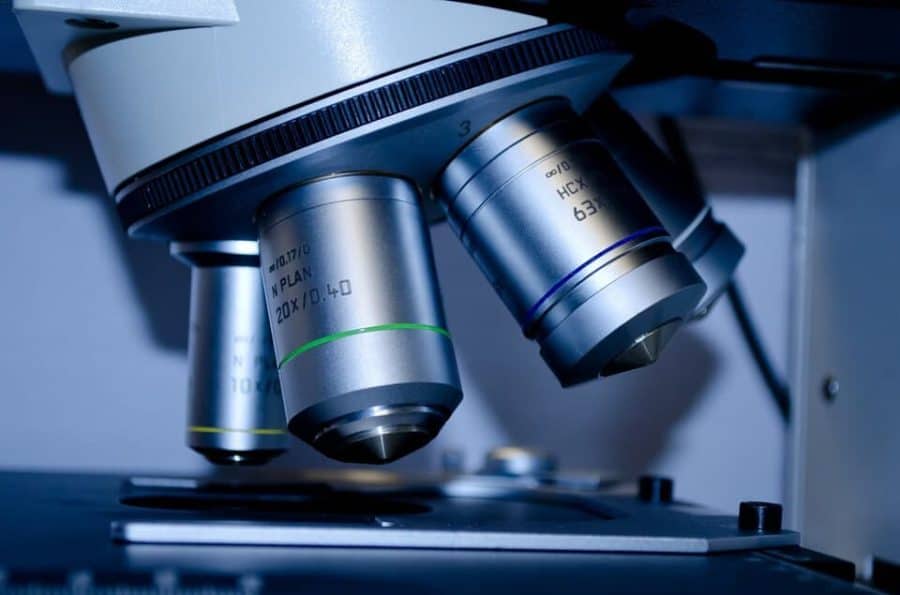Cabot Corporation had a mystery to solve: the global chemical and performance materials company was making carbon black for high-performance batteries, but finding the substance was ever-so-slightly contaminated. Since contaminants can decrease the performance and shorten the lifetime of batteries, this was a mystery in need of an urgent solution. Now, thanks to a collaboration between the company, UConn researchers, and ZEISS Microscopy, Cabot has a better idea of what the contaminants are and where they might be coming from—and the researchers developed a new way to map a material by combining four different kinds of microscopes.
“It’s a classic problem in microscopy: finding a needle in a haystack,” says UConn engineer and director of the Reverse Engineering Fabrication, Inspection and Non-destructive Analysis (REFINE) lab Sina Shahbazmohamadi. Although finding something microscopic with a microscope might seem easy, it’s actually very difficult. The finer your point of view, the vaster the territory.
“Carbon black is a low density powder. Five grams is a lot of material, volume-wise. And in five grams we are searching for contaminant particles that are five to ten micrograms across,” says engineering PhD candidate Abhinav Poozhikunnath, who lead the research. Finding them wouldn’t be easy. The classic method would be to burn the material to reduce the volume and then sift through it. But burning destroys any clues that could hint at how the carbon black was getting contaminated, and could also alter the contaminant itself.
Instead, Poozhikunnath decided to use a series of microscopes to narrow down the location of the contaminants and eventually find them directly. He worked with Shahbazmohamadi in the REFINE lab, which has state-of-the-art microscopes of each type and close connections with ZEISS Microscopy, which also collaborated on the work.
First, Poozhikunnath embedded the carbon black (which resembles black dust or soot) in epoxy to fix it in place so that it could be mapped. Then he scanned it with x-rays to create a 3D map, the same way a CT scan maps the human body. He knew the contaminants were metals, and probably a lot heavier than the carbon. That meant the x-rays would bounce off them, making bright spots in the map. And that’s just what happened.
Poozhikunnath then used a pulsed laser to remove larger lumps of epoxy and carbon black, followed by a Focused Ion Beam (FIB) microscope to finely cut away at the lump of epoxy and carbon black until it exposed a contaminant. The FIB shoots gallium ions at the sample. Each atom of gallium chips away a tiny bit of the epoxy or carbon black. It’s like a very, very fine chisel.
Once the contaminant was exposed, Poozhikunath took a picture of it and its surroundings with a Scanning Electron Microscope (SEM). SEMs can take beautiful visual images of microscopic surfaces, and can also reveal other things about the properties of what’s being imaged, depending on how the electrons interact with the surface.
He then used Energy Dispersive X-ray Spectroscopy (EDS) to analyze the contaminants and the carbon black particles surrounding them.
Using a computer program called Atlas, developed with the help of researchers at ZEISS, Poozhikunath and Shahbazmohamadi were able to have the different microscopes “talk” to each other. With Atlas, the x-ray CT scan could tell the FIB and SEM exactly where to look to find the contaminants with respect to a fixed point on the sample. This allowed the FIB and SEM to avoid instead scanning the entire lump (which would have been almost impossible, or at least take far too long.)
“This ability to communicate between different instruments is a key technological development that allowed us to succeed,” says Poozhikunath.
In Cabot’s carbon black, some of the contaminant turned out to be flecks of iron oxide. But the same technique could be used to solve many similar problems faced by all kinds of industries. It could also be automated and used for quality control purposes in the semiconductor industry, Sina says.
The researchers are currently working with ZEISS to see if they can completely automate the process, with the data from each microscope flowing into Atlas and helping to guide the next microscope’s investigation. They’re also exploring ways they might use this to train automated systems to find contaminants via machine learning algorithms.
Automating the process so microscopes can talk to each other and solve a real industrial problem is a valuable result, the researchers say. As was the way the researchers first learned about it: Cabot reached out to UConn VP for Research Radenka Maric, who has expertise in battery and fuel cell materials. Maric, in turn, told researchers in the Institute for Material Sciences about the problem, which is how Poozhikunnath and Shabazmohamadi got on the case.
As Shahbazmohamadi says, “Not only instruments should talk to each other; faculty should talk to each other, too!”


